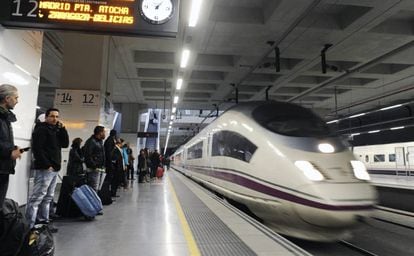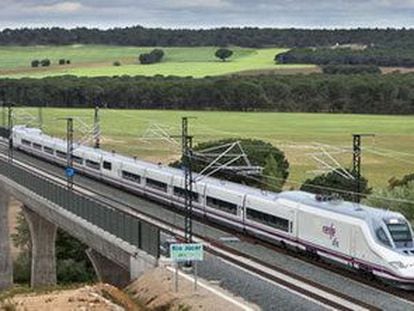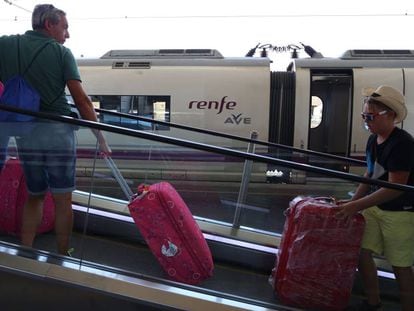One in four AVE stations used by fewer than 100 passengers a day
High-speed rail network is still making a loss overall, with just three profitable routes

The AVE high-speed railway station at Villena, one of three stops on the route between Madrid and Alicante, opened in 2013 at a cost of €11.5 million. Requena-Utiel, some 70 kilometers from Valencia, opened three years earlier and cost €12.4 million. Both were built specially for the country’s 3,400-kilometer high-speed rail network, the second longest in the world, and which has cost some €47 billion since the first line, between Madrid and Seville, opened in 1992. The two stations in Valencia are among the eight least-used of the system, and have come to be seen as symbols of the excesses of Spain’s infrastructure boom. One in four of the total of 31 AVE stations throughout the country is used by less than 100 passengers a day, according to official data seen by EL PAÍS.
Barely 20 passengers take one of the four AVE trains that pass through the wine-growing region on their way between Valencia and Madrid
Five AVE trains a day in each direction stop at Villena, some 60 kilometers inland from Alicante and six kilometers outside the town of the same name, but there is no public transport to it. The most recent figures, for 2014, show that 25,850 people bought tickets at the station in 2014. Renfe, the country’s state-owned rail operator, says that for the same year, 35,129,000 passengers in total used the AVE system. But as the company registers passengers twice, for the outward and return journey, the real number of passengers was 17,564,500.
There is no public transport to Requena-Utiel either. Barely 20 passengers take one of the four AVE trains that pass through the wine-growing region on their way between Valencia and Madrid. The cafeteria is closed, and the space set aside for shops also empty. “You can get to Valencia in 20 minutes on the AVE,” says one local resident, but when you add up the cost of the car park and the ticket, it just doesn’t add up,” she concludes.
Sign up for our newsletter
EL PAÍS English Edition is launching a weekly newsletter. Sign up today to receive a selection of our best stories in your inbox every Saturday morning. For full details about how to subscribe, click here.
It is the same story at Puente Genil, four kilometers outside the town in Córdoba province and three from the second, in Seville, where there are none of the facilities for travelers foreseen when it opened at a cost of €7.2 million. The building is designed to look like a bird in flight, while its 250-space carpark has no problem dealing with the 69 passengers that use it each day. Huesca (99), Guadalajara (92), Villanueva de Córdoba (23), Segovia (14), and Tardienta (1) are the remaining eight stations used by less than 100 people a day.
At the other extreme, eight stations carry 90% of all high-speed trains: Madrid-Puerta de Atocha, with almost 19,000 passengers a day, and Barcelona, with around 8,000, followed by Seville, Zaragoza, Valencia, Malaga, Cordoba and Alicante. Nevertheless, a recent report by the Fedea economic think tank concludes that there are not enough passengers to recoup the cost of the network.
The Fedea study concludes that only three corridors (Madrid-Barcelona, Madrid Andalusia and Madrid-Valencia-Alicante make money. But the northern route is a loss-maker.
The Fedea study concludes that only three corridors – Madrid-Barcelona, Madrid Andalusia and Madrid-Valencia-Alicante – make money
The Audit Office recently reported “major uncertainty about the long-term economic sustainability” of the high-speed rail network given its “high debt levels.”
In response, Renfe says the network should not be judged solely on economic criteria and that linking Spain’s regions was always a key aspect of the project. It adds that 60 percent of its conventional long-distance trains also use the network.
Despite attracting growing numbers of passengers (up 9% between 2014 and 2015, says Renfe) the AVE is still underused. In March, some 50 million people took the train, of whom only 3.4 percent, or 1.7 million, traveled on AVE routes.
English version by Nick Lyne.













































